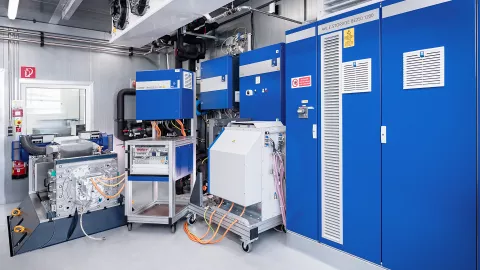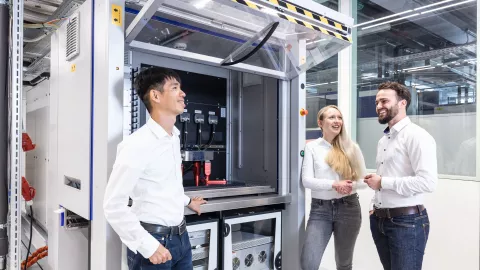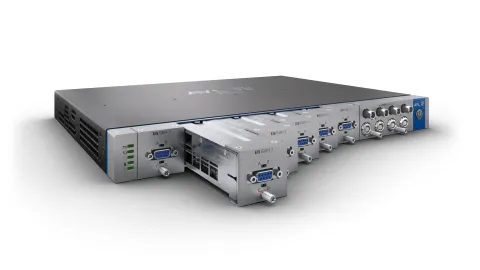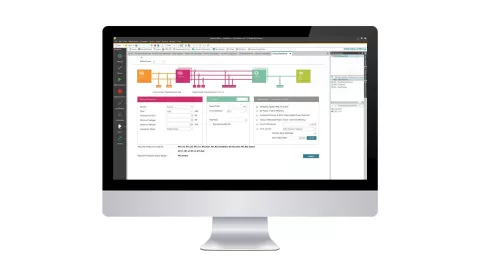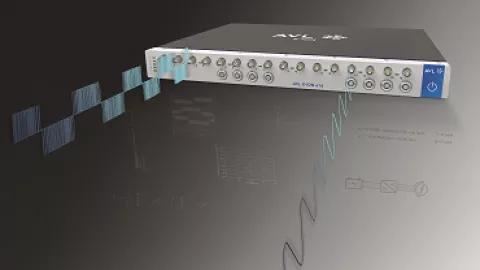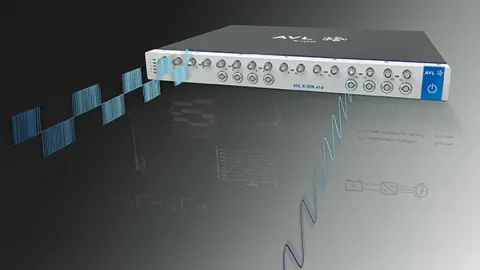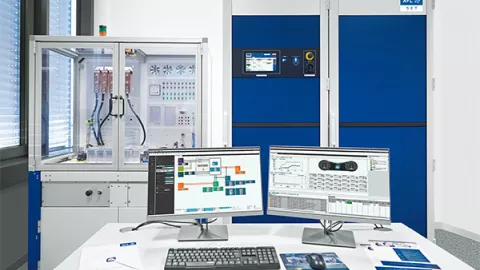The AVL X-ion e-Power front end modules (X-FEMs) filter and sample electrical voltages and currents at high speed (2 MS/s) and with high resolution (18-bit). Digital filtering is performed in the X-FEM with result processing being conducted in the X-ion base unit. The result data and optional raw data are streamed to the AVL IndiCom™ PC software for storage and display. The software offers a wide range of options for post-processing and interfacing to automation and application systems.
Alternatively, results can be output from the X-ion directly to CAN or EtherCAT for use in application systems.
| Technical Data | Unit |
|
# of front analog input channels |
Up to 16 signal channels / 8 power channels per system Cascading of systems for higher channel count |
| Data acquisition rate and resolution per channel | 2 MS/s @ 18 bit |
| Input voltage range | ± 60 V, ± 10 V, ± 1 V ± 1,500 V with AVL HVP-Box ± 1 A current input ± 2,000 A with CT and CTS-Box |
| Digital I / O channels for speed, torque, etc. |
8x TTL level, 2x RS422, 12x RS422 input (option) 9x LVDS, 2x CAN, EtherCAT (option), XCP |
| Ambient operating conditions |
-40 … +60 °C at relative humidity 10 …75 % (non-condensing) |
AVL X-ion™ PA2
The AVL X-ion™ PA2 is a high-precision power analyzer ideal for automotive, grid, industrial, marine, aviation, and various power testing applications, especially for e-drives and power electronics. It features snapshot technology for transient waveform evaluation, new current sensor integration, and easy setup. The device offers connectivity with direct resolver inputs and multiple digital I/Os for e-drive calculations. It ensures seamless integration from hardware to software, providing a comprehensive testing environment from a single supplier.

AVL X-ion™ 683
The AVL X-ion™ is a versatile data acquisition platform tailored for electric and hybrid applications. It features high-speed sampling (up to 12 MS/s) and 18-bit resolution for accurate power measurement and analysis. The system is compatible with various testing environments, including in-vehicle and testbed setups, and integrates seamlessly with AVL BEAT™ software for configuration, control, and data processing. Its flexibility and scalability make it ideal for a wide range of applications, such as e-motor testing, power harmonics testing, energy flow analysis, and hybrid NVH analysis.

Versatility and Consistency
One system covers all use-power measurement cases. Fully synchronized testing of hybrid powertrains with indicating, electrical power, or NVH in the test setup.
Testing and Optimization
Testing and optimization of 3 phase and 6 phase e-motors and inverters. Supported by real-time processing on the AVL X-ion hardware and based on individual cycles or user-definable moving averaging windows.
Solution Sheet AVL X-ion™ PA2
Precise electric power analysis over a wide frequency spectrum with multi-physics capability
Solution Sheet X-FEM F4H2
Synchronized high-speed power measurement and transient waveform analysis
Solution Sheet Power Measurement Trolley
Pre-installed power sensing solution added to a movable device trolley
Solution Sheet AVL X-ion™ e-Power
Flexible e-power measurement & analysis with the AVL Power Analyzer
Solution Sheet AVL X-ion™ e8/e16
Advanced automotive e-power measurement with the AVL Power Analyzer
Whitepaper Time Base Management
Test system complexity is no reason to compromise on result accuracy
Whitepaper Hybrid Electric Vehicles
Powertrain diagnostics in hybrid electric vehicles






